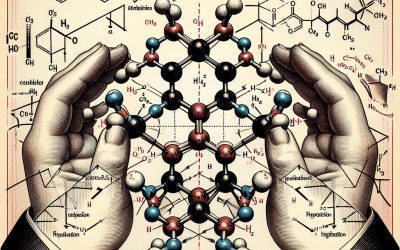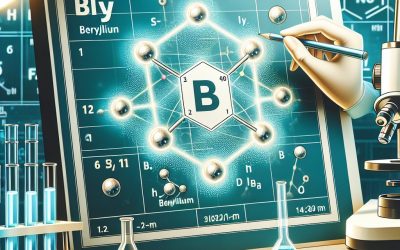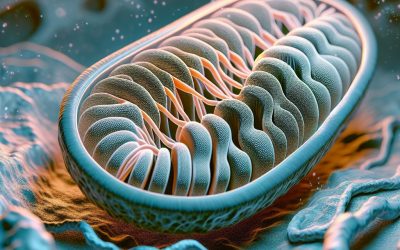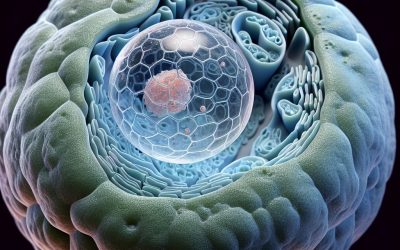Explore the World Through Geography, Natural Resources & Daily History
Clear, reliable and engaging guides that help you understand our planet — from UK geography education to global natural resources and On This Day history events.
Explore, discover, and learn about the wonders of our world! At Earth Site, we’re passionate about bringing geography, history, and science to life for curious minds of all ages. Whether you’re delving into historical events, uncovering the mysteries of the natural world, or seeking interactive resources, you’re in the right place.
Here, you can uncover the stories behind historical events, explore the natural wonders of our planet, and gain valuable insights into how the Earth’s systems shape our daily lives. From the towering peaks of mountain ranges to the far-reaching impacts of human innovation, we aim to make every topic both engaging and informative.
Start your journey of discovery with us today, and let’s make learning an adventure!
What We Cover
Earth Site brings together engaging and accessible educational content designed to help you understand the world, its history, and its natural systems.
🌍 Geography Education (UK & Worldwide)
We publish clear, easy-to-understand geography resources for students, teachers and curious learners. Our guides support geography education in the UK and cover physical geography, climate, ecosystems, population, and global development.
⛏️ Natural Resources & Environmental Geography
Explore detailed country profiles covering natural resources, mining, energy, geology and global environmental challenges. We show how nations manage minerals, water, land and ecosystems, and why these resources matter.
📅 On This Day in History
Every day has a story. Our On This Day history series features major events, anniversaries, traditions, and cultural milestones from around the world — with timelines, context, and fun facts.
TIMELINE
Unravelling the Intricacies of Stereochemistry: A Journey into the Fascinating World of Molecular Symmetry
Stereochemistry is a branch of chemistry that deals with the three-dimensional arrangement of atoms in molecules and the effect of this arrangement on the chemical and physical properties of compounds. It focuses on the study of molecular symmetry, which refers to the arrangement of atoms in space and the resulting symmetry or asymmetry of a molecule. The importance of molecular symmetry in stereochemistry cannot be overstated. The arrangement of atoms in a molecule determines its shape, which in turn affects its reactivity, biological activity, and physical properties. Understanding molecular symmetry is crucial for predicting how molecules will interact with each other and how they will behave in various chemical reactions. Summary Understanding molecular symmetry is crucial in stereochemistry. Stereochemistry plays a vital role in both chemistry and biology. Asymmetric molecules have chirality, which is important in stereochemistry. Enantiomers and diastereomers are types of stereoisomers. Stereochemistry is essential in drug design and development. The Importance of Stereochemistry in Chemistry and Biology Stereochemistry plays a vital role in both chemistry and biology. In chemistry, stereochemistry is essential for understanding the behavior of molecules in reactions and for designing new compounds with specific properties. For example, the stereochemistry of a drug molecule can determine its effectiveness and safety. In biology, stereochemistry is crucial for understanding the structure and function of biomolecules such as proteins and enzymes. One example of stereochemistry in chemistry is the concept of chirality. Chirality refers to the property of a molecule that cannot be superimposed on its mirror image. Chiral molecules have two non-superimposable mirror image forms called enantiomers. This property has significant implications in drug design...
Unleashing the Wonders of Beryllium: Exploring the Applications and Properties of Be
Beryllium is a chemical element with the symbol Be and atomic number 4. It is a rare and versatile element that has been used in various industries for centuries. The history of beryllium dates back to ancient times, with its discovery credited to the French chemist Louis-Nicolas Vauquelin in 1798. However, it was not until the late 19th century that beryllium began to be used commercially. Beryllium has a number of unique properties that make it highly valuable in various industries. It is a lightweight metal with a high melting point, excellent thermal conductivity, and exceptional strength-to-weight ratio. These properties make it ideal for use in aerospace, defence, nuclear technology, electronics, and medical applications. Summary Beryllium is a rare and versatile element with unique physical and chemical properties. Beryllium is used in high-performance applications in aerospace and defence, as well as in nuclear technology and medical applications. Beryllium is also used in electronics, such as computer components and mobile devices. Beryllium has potential in sustainable energy technologies, but its environmental impact must be carefully considered. The future of beryllium includes emerging applications and technologies, but challenges in mining and production must be addressed. The Physical and Chemical Properties of Beryllium: Understanding its Unique Characteristics Beryllium has an atomic structure that consists of four protons, four neutrons, and four electrons. It is a relatively small atom, with a radius of only 112 picometers. The electron configuration of beryllium is 1s2 2s2, which means it has two electrons in its inner shell and two electrons in its outer shell. Chemically, beryllium is a highly reactive element. It readily forms compounds...
Exploring the Fascinating World of Animal Cells: Uncovering their Unique Characteristics
Animal cells are the basic building blocks of all living organisms in the animal kingdom. They are eukaryotic cells, meaning they have a true nucleus and membrane-bound organelles. Animal cells are essential for the survival and functioning of living organisms. They play a vital role in various physiological processes, such as growth, development, reproduction, and maintaining homeostasis. Animal cells are responsible for carrying out specific functions within an organism. They make up tissues, organs, and organ systems, which work together to ensure the proper functioning of the body. Without animal cells, living organisms would not be able to carry out essential processes like respiration, digestion, and circulation. Key Takeaways Animal cells are important building blocks of life and play a crucial role in various biological processes. Understanding the anatomy of animal cells is essential to comprehend their functions and roles in the body. Animal cells come in different types and perform diverse functions, such as muscle cells, nerve cells, and blood cells. The cell membrane is a vital component of animal cells that regulates the exchange of substances between the cell and its environment. The nucleus, mitochondria, endoplasmic reticulum, Golgi apparatus, and cytoskeleton are all essential organelles that perform specific functions within animal cells. The Anatomy of Animal Cells: Understanding their Structures and Functions Animal cells have a complex structure with various parts that work together to carry out specific functions. The main components of an animal cell include the cell membrane, nucleus, mitochondria, endoplasmic reticulum, Golgi apparatus, and cytoskeleton. The cell membrane is a thin, flexible barrier that surrounds the cell and separates it from its environment. It...
The Fascinating World of Number Theory: Unraveling the Mysteries of Prime Numbers and More
Number theory is a branch of mathematics that deals with the properties and relationships of numbers, particularly integers. It is one of the oldest and most fundamental areas of mathematics, with roots dating back to ancient civilizations such as the Egyptians and Babylonians. Number theory has applications in various fields, including cryptography, computer science, and physics. It provides a foundation for many other branches of mathematics and is essential for understanding the structure and behavior of numbers. Key Takeaways Number theory is the study of the properties of numbers and their relationships. Prime numbers are fascinating because they can only be divided by 1 and themselves. The Sieve of Eratosthenes is a simple method to find prime numbers by eliminating multiples of smaller primes. Goldbach’s Conjecture states that every even number can be expressed as the sum of two prime numbers. The Riemann Hypothesis is a famous unsolved problem in mathematics that deals with the distribution of prime numbers. The Beauty of Prime Numbers Prime numbers are a central concept in number theory. A prime number is a positive integer greater than 1 that has no positive divisors other than 1 and itself. In other words, it cannot be divided evenly by any other number except for 1 and itself. For example, 2, 3, 5, 7, and 11 are all prime numbers. Prime numbers have several interesting properties. One property is that every positive integer greater than 1 can be expressed as a unique product of prime numbers, known as its prime factorization. This property is fundamental to many areas of mathematics, including algebra and number theory. Prime numbers...
Unveiling the Fascinating World of Animal Cells: Exploring Their Structure and Functions
Animal cells are the basic building blocks of all living organisms in the animal kingdom. They are eukaryotic cells, meaning they have a true nucleus and membrane-bound organelles. Animal cells play a vital role in biology and medicine as they are the foundation of understanding how organisms function and how diseases develop. Animal cells are important in biology because they provide the basis for studying the structure and function of living organisms. By examining animal cells, scientists can gain insights into the fundamental processes of life, such as cell division, metabolism, and gene expression. Animal cells also serve as models for studying human cells, as they share many similarities in terms of structure and function. In medicine, animal cells are crucial for understanding diseases and developing treatments. By studying animal cells, scientists can investigate the mechanisms of diseases and identify potential targets for drug development. Animal cell cultures are also used in drug testing and screening to determine the efficacy and safety of new drugs before they are tested on humans. Key Takeaways Animal cells are important building blocks of life and have various functions in the body. The basic structure of animal cells includes the cell membrane, nucleus, mitochondria, endoplasmic reticulum, Golgi apparatus, cytoskeleton, and lysosomes. The cell membrane protects the cell and regulates the flow of molecules in and out of the cell. The nucleus is the brain of the cell and controls cell growth and reproduction. The mitochondria are the powerhouse of the cell and produce energy for the cell to function. The Basic Structure of Animal Cells: Understanding the Anatomy of Living Cells Animal cells...
The Powerhouse of the Cell: A Closer Look at Mitochondria
Mitochondria are often referred to as the “powerhouse of the cell” due to their crucial role in cellular function. These small, double-membraned organelles are found in the cytoplasm of eukaryotic cells and are responsible for producing the majority of the energy needed by the cell. They play a vital role in cellular respiration, which is the process by which cells convert glucose and oxygen into ATP (adenosine triphosphate), the energy currency of the cell. Key Takeaways Mitochondria are the powerhouses of the cell, responsible for energy production through cellular respiration. The structure of mitochondria includes an outer membrane, inner membrane, intermembrane space, and matrix. Mitochondria play a crucial role in cellular respiration, converting glucose and oxygen into ATP, the energy currency of the cell. Mitochondria use oxidative phosphorylation to produce ATP, a process that involves the electron transport chain and proton gradient. Mitochondrial DNA has unique features and characteristics, and mutations can lead to mitochondrial diseases with symptoms such as muscle weakness and fatigue. The Structure of Mitochondria: A Closer Look To understand the function of mitochondria, it is important to take a closer look at their structure. Mitochondria have a unique structure that consists of an outer membrane, an inner membrane, cristae, and a matrix. The outer membrane is smooth and porous, allowing for the passage of small molecules. It acts as a protective barrier for the organelle. The inner membrane, on the other hand, is highly folded and contains numerous protein complexes that are essential for energy production. These folds, known as cristae, increase the surface area of the inner membrane, allowing for more efficient ATP...
Uncovering Insights with Regression Analysis: A Comprehensive Guide
Regression analysis is a statistical technique used to model the relationship between a dependent variable and one or more independent variables. It is a powerful tool for understanding and predicting the behavior of variables in various fields, including economics, finance, social sciences, and healthcare. The main purpose of regression analysis is to estimate the parameters of a mathematical equation that best describes the relationship between the variables. In regression analysis, the dependent variable is also known as the outcome variable or response variable, while the independent variables are referred to as predictors or explanatory variables. The goal is to find the best-fitting line or curve that represents the relationship between the predictors and the outcome variable. This line or curve can then be used to make predictions or understand the impact of changes in the predictors on the outcome variable. Key concepts and terminology in regression analysis include: – Regression equation: The mathematical equation that represents the relationship between the predictors and the outcome variable.– Coefficients: The values that represent the slope or impact of each predictor on the outcome variable.– Residuals: The differences between the observed values of the outcome variable and the predicted values from the regression equation.– Assumptions: The conditions that must be met for regression analysis to be valid, such as linearity, independence, and normality of residuals. Key Takeaways Regression analysis is a statistical method used to model the relationship between a dependent variable and one or more independent variables. Linear, multiple, and nonlinear regression are the three main types of regression models used in data analysis. Data preparation is a crucial step in regression...
Discovering the Hidden Gems of Brunei: A Journey Through Southeast Asia’s Best Kept Secret
Brunei, a small country located on the island of Borneo in Southeast Asia, is often overlooked by travelers in favor of its more popular neighbors like Malaysia and Indonesia. However, this hidden gem has much to offer visitors who are willing to venture off the beaten path. With its rich cultural heritage, stunning natural wonders, and warm hospitality, Brunei is a destination that should not be missed. Brunei’s history dates back to the 7th century when it was ruled by various indigenous tribes. In the 15th century, Brunei became a powerful sultanate and controlled much of Borneo and parts of the Philippines. Today, Brunei is a constitutional monarchy with Sultan Hassanal Bolkiah as its ruler. Despite its small size, Brunei is one of the wealthiest countries in the world due to its vast reserves of oil and natural gas. One of the reasons why Brunei is often overlooked by travelers is its lack of mass tourism infrastructure. Unlike its neighboring countries, Brunei does not have a bustling backpacker scene or an abundance of luxury resorts. However, this is part of what makes Brunei unique and worth visiting. The country offers a more authentic and untouched experience, allowing visitors to immerse themselves in its rich culture and natural beauty. Key Takeaways Brunei is a hidden gem in Southeast Asia, with rich cultural heritage and stunning natural wonders. Off-the-beaten-path adventures await in Brunei, with unique cuisine and local delicacies to indulge in. Must-see sights and experiences in Brunei include navigating bustling cities and quaint villages. The friendly people of Brunei offer a warm welcome and a chance to understand Islamic traditions...
The Mighty Vacuole: Understanding the Importance of this Cellular Organelle
The vacuole is a vital organelle found in the cells of both plants and animals. It is a membrane-bound structure that plays a crucial role in cellular biology. The term “vacuole” comes from the Latin word “vacuus,” meaning empty, as early scientists believed that these organelles were simply empty spaces within the cell. However, we now know that vacuoles are far from empty and are involved in a wide range of important functions. The vacuole is primarily responsible for storing various substances within the cell. It acts as a storage compartment for water, ions, nutrients, and waste products. In plant cells, vacuoles can occupy up to 90% of the cell’s volume, making them the largest organelles in these cells. In animal cells, vacuoles are smaller and less prominent but still play essential roles in cellular processes. Key Takeaways The vacuole is an organelle found in plant and some animal cells that plays a crucial role in maintaining cellular homeostasis. The vacuole is composed of various components, including a membrane, tonoplast, and various enzymes, which work together to carry out its functions. In plant cells, the vacuole is responsible for storing nutrients, regulating water balance, and maintaining turgor pressure. Vacuoles also play a key role in cellular waste management, cellular defense, growth and development, and cellular signaling. Dysfunction of the vacuole can lead to various cellular health issues and diseases, highlighting the importance of continued research in this area. The Structure of the Vacuole: A Closer Look at Its Components and Functions. The vacuole is surrounded by a membrane known as the tonoplast, which separates its contents from the...
Exploring the Fascinating World of Functional Groups in Organic Chemistry
Functional groups are specific groups of atoms within a molecule that determine its chemical properties and reactivity. They are responsible for the characteristic behavior of organic compounds and play a crucial role in organic chemistry. Functional groups are defined by the presence of certain atoms or combinations of atoms, such as carbon, hydrogen, oxygen, nitrogen, sulfur, and halogens. The importance of functional groups in organic chemistry cannot be overstated. They provide a way to classify and categorize organic compounds based on their chemical behavior and properties. By understanding the functional groups present in a compound, chemists can predict how it will react with other compounds and design new molecules with desired properties. Summary Functional groups are specific groups of atoms that determine the chemical properties of organic compounds. Understanding the role of functional groups is crucial in predicting and understanding chemical reactions. Common functional groups include alcohols, carbonyls, amines, thiols, and halogens. Alcohols are versatile functional groups that can undergo various reactions, including oxidation and dehydration. Carbonyl functional groups, such as ketones and aldehydes, are important in organic chemistry due to their reactivity and involvement in many biological processes. Understanding the Role of Functional Groups in Chemical Reactions Functional groups have a significant impact on chemical reactions. They determine the reactivity and behavior of organic compounds, influencing how they interact with other molecules. The presence of certain functional groups can make a compound more or less reactive, and can even dictate the type of reactions it can undergo. For example, alcohols contain the hydroxyl functional group (-OH), which makes them highly reactive. The hydroxyl group can undergo various reactions,...
The Power of Lithium: How This Element is Revolutionizing Energy Storage
Energy storage has become increasingly important in recent years due to the growing demand for reliable and sustainable energy sources. As renewable energy technologies such as solar and wind power continue to gain popularity, the need for efficient and cost-effective energy storage solutions has become more pressing. Energy storage plays a crucial role in enabling the integration of renewable energy into the grid, as it allows excess energy to be stored and used when needed. Summary Energy storage is crucial for the future of renewable energy. Lithium is a versatile and efficient element for energy storage. Lithium-ion batteries work by moving ions between electrodes. Lithium’s unique properties make it ideal for energy storage, including its high energy density and low weight. Lithium-ion batteries have a wide range of applications, from smartphones to electric cars. Lithium: The Wonder Element of Energy Storage Lithium is often referred to as the “wonder element” of energy storage due to its unique properties that make it an ideal choice for battery technology. It is the lightest metal and has a high electrochemical potential, which means it can store a large amount of energy in a small volume. Additionally, lithium is highly abundant in the earth’s crust, making it a readily available resource for battery production. The use of lithium in energy storage dates back to the 1970s when researchers first discovered its potential as a battery material. Since then, lithium-ion batteries have become the dominant technology for portable electronics such as smartphones and laptops. In recent years, they have also gained traction in the electric vehicle market and are now being explored for grid-scale...
The Intricate Functions of the Golgi Apparatus: Understanding the Hub of Cellular Transport
The Golgi apparatus is a vital organelle found in eukaryotic cells that plays a crucial role in cellular transport. Named after its discoverer, Italian physician Camillo Golgi, this organelle is responsible for sorting, modifying, and packaging proteins and lipids for transport to their final destinations within the cell or for secretion outside of the cell. The Golgi apparatus acts as a central hub for cellular transport, ensuring that molecules are properly sorted and modified before reaching their intended targets. Key Takeaways The Golgi Apparatus is a crucial organelle responsible for cellular transport. It is composed of flattened stacks of membranes and is organized into distinct regions. The Golgi Apparatus plays a key role in sorting and modifying proteins, as well as lipid metabolism and glycosylation. It is involved in the secretory pathway, endocytosis, and the formation of lysosomes. Dysfunctions in the Golgi Apparatus have been linked to various diseases, making it a potential target for therapeutic strategies. Structure and Organization of the Golgi Apparatus The Golgi apparatus is composed of a series of flattened membrane-bound sacs called cisternae. These cisternae are stacked on top of each other, forming what is known as the Golgi stack. The number of cisternae in a Golgi stack can vary depending on the cell type and its specific functions. Each cisterna has distinct regions: the cis-Golgi network (CGN), the medial-Golgi, and the trans-Golgi network (TGN). The cis-Golgi network is located closest to the endoplasmic reticulum (ER) and serves as the entry point for proteins and lipids entering the Golgi apparatus. The medial-Golgi is located in the middle of the stack and is responsible for...











